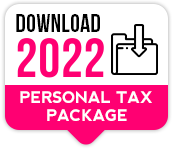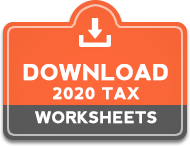
Strapped for cash? How to uncover unclaimed money that may belong to you
July 15, 2020
CRA extends work-from-home reimbursement to cover office equipment, not just computers
November 16, 2020In an April 14, 2020 French Technical Interpretation, CRA was asked whether amounts paid to an employee for costs of equipment for working remotely would be a taxable benefit.
Generally, a reimbursement for a personal purchase of equipment used for working remotely would be a taxable benefit. However, CRA noted that in the context of the COVID-19 pandemic, which has required many employees to work remotely, acquisition of computer equipment may be primarily for the employer’s benefit. In that context, CRA indicated that no taxable benefit would arise for a reimbursement, supported by actual invoices or receipts, of no more than $500 towards such equipment.
CRA also stated that a non-accountable allowance would always be taxable, as no provision would provide for an exclusion of such amounts.
CRA did not comment on the consequences if the equipment were used exclusively for employment and was owned by the employer, not the employee. CRA has indicated in the past that, where equipment is property of the employer, and any personal use is incidental, there would be no taxable benefit to the employee.
ACTION ITEM: Consider providing a reimbursement to employees for the personal purchase of equipment for working remotely of up to $500.
General CRA activity Over the last few years, CRA has focused on purchases and sales within the real estate sector. They are reviewing transactions for several items, such as:
• property flips on account of income;
• ineligible principal residence claims;
• commissions on sales;
• pre-sale condo assignments; and
• eligibility for the GST/HST new housing and rental rebates. One method for reviewing such transactions is by requiring taxpayers to respond to a detailed questionnaire. The questionnaire covers items such as:
• date and details of purchase and sale in sale agreements, statements of adjustments, and mortgage/financial documentation;
• details of any major renovations, building permits, construction contracts, and municipal approvals;
• estimates of fair market values at different key points (such as after the completion of a renovation);
• real estate listing agreements; and
• invoices, receipts, bank statements, driver’s licence, and other items which indicates the address of the property.
The purchaser’s intention for the use of the property is key in determining the appropriate tax treatment upon sale.
U.S. real estate
On June 25, 2020, CRA issued a solicitation for engaging one or more third-party suppliers to provide “U.S. real estate and real property data where a Canadian resident is the owner or party to the purchase, sale or transfer” back to, at a minimum, January 1, 2014 with ongoing provision of new data on a monthly basis.
CRA may consider reviewing several issues in this context, including:
• missed disclosure of real estate not exclusively held for personal use;
• unreported rental income, whether not reported at all or not reported accurately;
• unreported real estate sales; and
• inappropriate claims for the principal residence exemption on such dispositions.
ACTION ITEM: Even a fully exempt principalresidence sale was required to be reported for 2016 and later years. Where disposals of real estate in 2016 or subsequent years are not reported, CRA can reassess for an unlimited period. Ensure all disposals, in Canada and abroad, are reported on the tax return.
LOANS FOR VALUE: Income Splitting Tool
Special attribution rules prevent the shifting of income between certain related people (including a spouse, parent, grandparent, sibling, uncle or aunt). Consider the situation where high-earning Spouse A gives investments to low-earning Spouse B so that investment income can be taxed at Spouse B’s lower tax rate. The attribution rules prevent this by requiring the earnings to be taxed in the hands of the transferor, Spouse A. However, these rules do not apply where the low-income person pays fair market value for the capital received. One way to pay for such investment capital is with properly structured loans, commonly referred to as “loans for value”.
The loan must satisfy several conditions to facilitate income splitting:
• the loan must bear interest;
• the interest must be at a rate no lower than the CRA prescribed rate at the date the loan is advanced; and
• the interest for every year must be paid no later than January 30 of the following year.
Missing a single interest payment invalidates the loan for the year in respect of which the interest accrued and all subsequent years. For example, interest for 2019 was required to be paid by January 30, 2020. If the interest was not paid, attribution would apply for 2019 and all subsequent years.
The borrower (commonly a trust for minor children or grandchildren) can then invest the borrowed funds and earn income. Because the borrowed funds are used to earn income, the borrower is entitled to deduct the interest incurred as a carrying charge. To the extent the return on their investments exceeds the interest, the difference will be taxable to the lower-income borrower.
This planning tool is of particular interest now as CRA’s prescribed interest rate declined to 1% (from 2%), as of July 1, 2020.
CRA has confirmed that the interest rate can be fixed at the time the loan is advanced, without further adjustment when the prescribed rate changes. However, where a pre-existing loan requires higher interest (such as the 2% rate in effect to June 30, 2020), the rate cannot be adjusted downwards as it is also locked in at initial advance. Where there is an existing loan at 2% (or higher), refinancing at the lower 1% rate would require that the borrower repay the original loan. A new loan could then be advanced at 1% interest. Where appreciated assets must be transferred or sold to repay the loan, accrued gains would need to be reported.
ACTION ITEM: Consider setting up a loan for value if there is significant investment capital available, and a family member at a lower marginal tax rate.
OAS DEFERRAL: Undoing an Application
As of July 1, 2013, where receipt of Old Age Security (OAS) is delayed, the monthly pension is increased by a factor of 0.6% for each month deferred, to a maximum increase of 36% (60 months, commencing receipt at age 70).
In a March 25, 2020 Federal Court case, the Court reviewed Service Canada’s decision to deny relief to an individual who applied to cancel his OAS pension slightly more than one year after it had commenced. The taxpayer wanted to benefit from recent changes which allowed deferral of receipt in exchange for higher future payments. His entire OAS pension for the previous year was lost due to high earnings.
Normally an individual has the ability to cancel a pension only within six months of the first payment. However, the Court looked to a special provision which allows the government to take remedial action for denied benefits resulting from erroneous advice or administrative error in the administration of the OAS Act.
Taxpayer wins
The Court found that the government was not required to demonstrate that communications advising the taxpayer of changes to the rules had been appropriately delivered. However, they were required to demonstrate that these communications had been sent, and the evidence they provided did not demonstrate their mailings went to the specific taxpayer. Therefore, the decision to deny relief was not reasonable. Further, although the taxpayer did not lose immediate benefits as a result of the early application, there were future benefits lost due to the denied deferral.
ACTION ITEM: Before applying for OAS, make sure to determine whether your income (and expected income) will erode the benefits. If so, consider deferring application to benefit from increased future OAS payments.
UNREASONABLE ALLOWANCES: Fully or Partially Taxable?
In a May 15, 2020 Federal Court of Appeal case, the Court reviewed whether various allowances paid to employees of the taxpayer were subject to CPP and EI. This required determining whether the allowances were taxable. The Tax Court of Canada had previously ruled that some of the allowances were partially taxable, while others were either fully taxable or fully non-taxable. At issue in this case was whether an allowance could be partially taxable or whether being in excess of a “reasonable amount” resulted in the allowance being entirely taxable.
Taxpayer loses
After reviewing the exclusion of reasonable travel allowances from income rules, the Court concluded that the entire allowance is excluded from income if it is reasonable, or fully included in income if it is unreasonable. It cannot be partially taxable. As the allowances in question exceeded a reasonable amount, they were entirely taxable.
ACTION ITEM: It is extremely important to ensure that allowances paid are reasonable. If they are determined to be unreasonable, even if by the thinnest of margins, the full allowance could go from non-taxable to taxable. Consult with a specialist to ensure that they are comfortably reasonable.
EMPLOYMENT INSURANCE (EI): Voluntary Departure
In a June 5, 2020 Federal Court of Appeal case, the Court reviewed Service Canada’s decision to deny EI benefits on the basis that the individual left his employment voluntarily. The individual argued that although it was his decision to leave, he had just cause (which would allow him to receive EI). To have just cause, the individual would be required to establish that he had no reasonable alternative but to leave his job.
Taxpayer loses
The Court found no reviewable error in earlier decisions, noting that the individual could have:
• discussed his concerns more thoroughly with his employer to explore possible accommodations (rather than asking on arrival at the worksite not to work the night shift);
• requested medical leave, consulted with a doctor, or obtained a doctor’s note; or
• continued to work until he found other employment.
The Court also noted the individual’s own statement that he could have continued working if his employer had not refused to pay him an additional $3/hour.
The Canada Emergency Response Benefit (CERB) angle
Voluntary departure from a position (quitting) also prevents participation in the CERB. Although there is uncertainty as to whether a “voluntary departure” for CERB purposes has the same meaning as for EI, they will likely be fairly similar.
ACTION ITEM: Eligibility for CERB is dependent upon whether it is the employer or employee’s decision to leave, and why that decision was made. Prior to changing employment status of workers, consult with a human resources specialist or lawyer to understand the implications for both the business and the employees.
CHANGES TO PAYROLL: Correcting Errors
What if I make a clerical, administrative, or system error resulting in a salary overpayment? On April 6, 2020, CRA released the updated guide RC4120 Employers’ Guide – Filing the T4 slip and Summary providing detailed instructions on these such issues.
The employer may elect to have the employee repay the net amount (gross amount less CPP, EI and income tax withheld) overpaid due to the error, provided they meet the following criteria:
• no later than three years after the end of the year in which the salary was overpaid
o the employer made the election in the prescribed manner (see below),
o the employee repaid or arranged to repay the net amount of the overpayment;
• the employer did not issue a T4 slip with the employee’s correct earnings (that is, with the salary overpayment removed); and
• the employer’s business is actively operating.
This election would reduce the cashflow burden the employee would otherwise bear.
The election
The election is made by either excluding the salary overpayment from an original T4 slip or amending a T4 slip to remove the overpayment and reducing the corresponding income tax deducted, along with CPP and EI withheld and remitted.
Repayment after the T4 is issued
If the employee repays or arranges to repay after the original T4 is issued, the employer must amend the T4 slip appropriately, including any relevant CPP and EI adjustments.
After CRA receives and processes the amended T4, it will credit the income tax, CPP and EI remitted on the salary overpayment made in error (including the employer’s share of CPP contributions and EI premiums) to the employer’s payroll program account. The employer can then reduce the next payroll remittance by the credited amount.
Finally, CRA also provided guidance and examples for situations in which the employer does not elect to have the net amount repaid, and the gross amount is repaid instead.
ACTION ITEM: Over the course of the COVID-19 pandemic, many adjustments have been made to payroll for businesses. If a T4 correction or wage adjustment is required, consult with the detailed guidance in publication RC4120, or reach out for assistance.
TEMPORARY LAY-OFFS: Supplemental Unemployment Benefit (SUB) Plans
The purpose of a SUB plan is to allow an employer to make supplemental payments to Employment Insurance (EI) benefits, without eroding those EI benefits. As payments under a registered SUB plan are not insurable earnings, EI premiums are not deducted.
In order to be eligible, SUB plans must be registered with Service Canada before their effective date. Plans must:
• identify the group of employees covered and the duration of the plan;
• cover a period of unemployment caused by one or a combination of the following:
o temporary stoppage of work,
o training,
o illness, injury or quarantine;
• require employees to apply for and be in receipt of EI benefits in order to receive payments under the plan;
• require that the combined weekly payments from the plan and the portion of the EI weekly benefit rate does not exceed 95% of the employee’s normal weekly earnings;
• require it be entirely financed by the employer;
• require that on termination all remaining assets of the plan will revert to the employer or be used for payments under the plan or for its administrative costs;
• require that written notice of any change to the plan be given to Service Canada within 30 days after the effective date of the change;
• provide that the employees have no vested right to payments under the plan except during a period of unemployment specified in the plan; and
• provide that payments in respect of guaranteed annual remuneration, deferred remuneration, or severance pay will not be reduced or increased by payments received under the plan.
A plan registered with Service Canada is not required to be a trust. It could be funded from general revenues.
Income tax treatment
For income tax purposes, a SUB plan is defined more restrictively, as it is required to be a trust to which the employer makes payments. Such plans can be registered with CRA, in which case any income earned within the SUB trust is non-taxable. Whether or not registered, receipts are taxable to the employee. Payments to a registered SUB plan are deductible to the employer if made no later than 30 days after year-end. Payments to SUB plans are not otherwise deductible, so a plan structured as a trust must be registered for employer contributions to be deductible.
A SUB plan which is not a trust would not be subject to the above rules. Deductibility of payments would follow the general rules for all expenses for income tax purposes.
Interaction with the Canada Emergency Response Benefit (CERB)
The provisions that exist under the EI system for employers to make additional payments to workers through SUB plans do not apply to employees who are receiving the CERB.
Amounts received by individuals from any employer in excess of the $1,000 threshold would create an obligation for the individuals to repay CERB they received for the same benefit period.
Employers that wish to do so may continue to submit a SUB plan to Service Canada. By registering a plan, employers can make payments to employees who are currently receiving EI regular or sickness benefits and will also be prepared should employees need EI benefits at a future time.
ACTION ITEM: As CERB is scheduled to end September 26, 2020, many individuals will now begin to rely on the EI system. The time may be right to consider setting up SUB plans as individuals transition to traditional EI.
VIDEO CONFERENCING TIPS: Making it Look Professional
In an April 29, 2020 CPA Canada article, the author provided a variety of tips for professional meetings conducted by online video conference, which has become much more common during the COVID-19 pandemic.
Among the tips discussed, the author recommended the following:
• having a meeting host to own the meeting, set the agenda, and drive the meeting;
• setting protocols such as the use of mute features (whether by participants or the host) or chat functions;
• using the waiting room to avoid one client dropping in while another meeting is in progress;
• framing the view to control what participants see in the background; and
• sharing screens to more efficiently share information.
ACTION ITEM: Prior to providing video content or presenting virtually, review this article. As virtual communication will likely be a permanent fixture in the future, consideration should be given to investing in a reliable, quality web camera and microphone.







